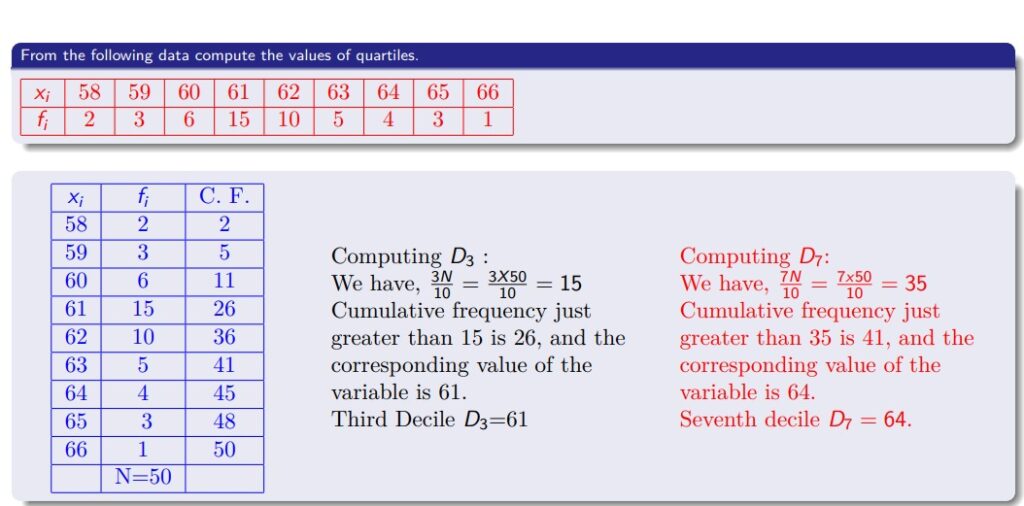How to Compute Deciles
In this lesson, we are going to learn how to calculate the values of deciles, a using the given data. This guide will walk you through the computation process.
Example Data
The data provided is:
| Variable (xi) | Frequency (fi) | Cumulative Frequency (C.F.) |
|---|---|---|
| 58 | 2 | 2 |
| 59 | 3 | 5 |
| 60 | 6 | 11 |
| 61 | 15 | 26 |
| 62 | 10 | 36 |
| 63 | 5 | 41 |
| 64 | 4 | 45 |
| 65 | 3 | 48 |
| 66 | 1 | 50 |
Total number of observations, N = 50.
Finding the Third Decile (D3)
To find the third decile (D3), we use the formula:
D3 = (3N / 10) = (3 × 50) / 10 = 15
We look for the cumulative frequency just greater than 15, which is 26. The corresponding value of the variable is 61.
So, the third decile (D3) is 61.
Finding the Seventh Decile (D7)
To find the seventh decile (D7), we use the formula:
D7 = (7N / 10) = (7 × 50) / 10 = 35
We look for the cumulative frequency just greater than 35, which is 41. The corresponding value of the variable is 64.
So, the seventh decile (D7) is 64.
This approach can be used to find other deciles.
